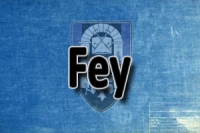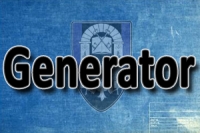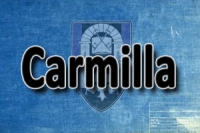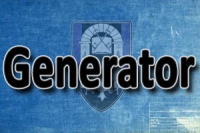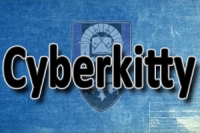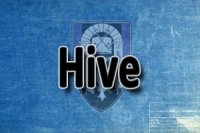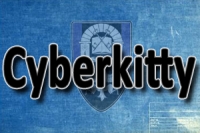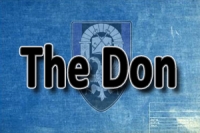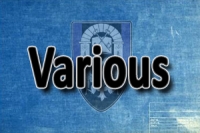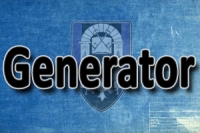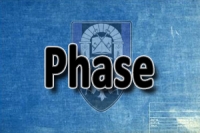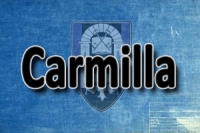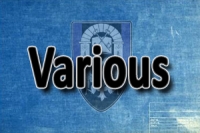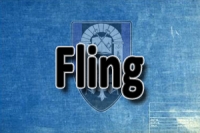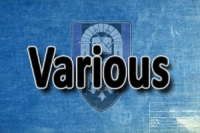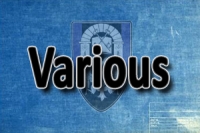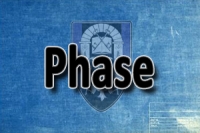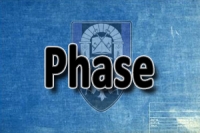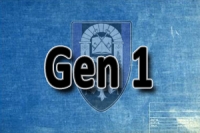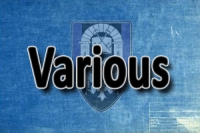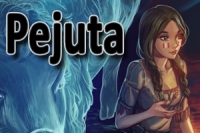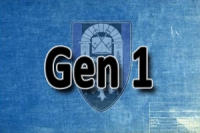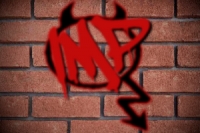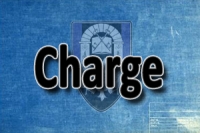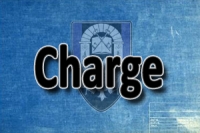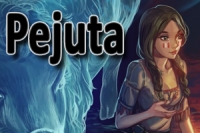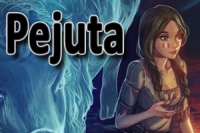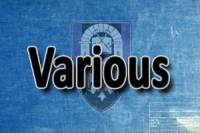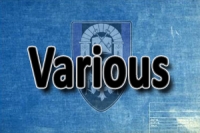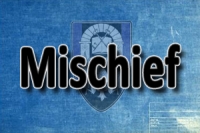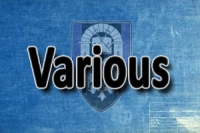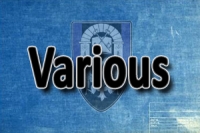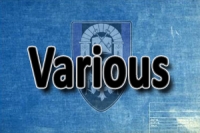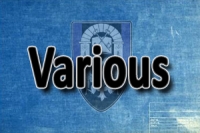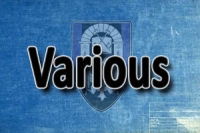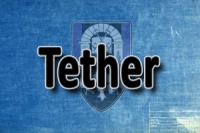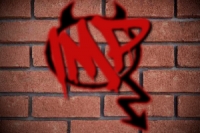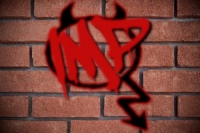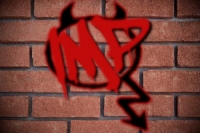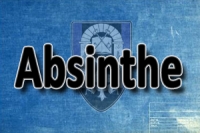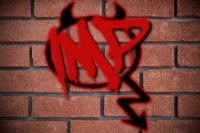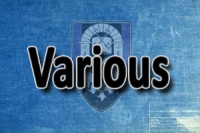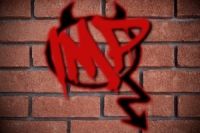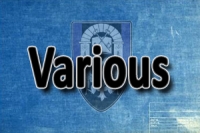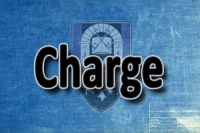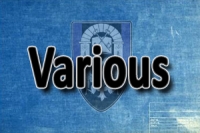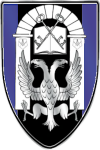The foundations of the MCO belong ultimately in examples set by groups such as the Bavarian Illuminati, the Rosicrucians, Anarchist Insurrectionists, the Ku Klux Klan, European gangs, and Chinese Tongs. However, the true beginnings can be found in the back alleys of the Intelligence War fought during World War One. While the seminal image of WWI is, of course, the horrific meat-grinder of men that was trench warfare during the Battles of the Marne and the Somme, there were other fronts as well. Besides the equally harsh Eastern Front, there was a lively war of espionage that was fought between the Intelligence services of the Central and Alliance power. Before WWI, Intelligence and Espionage had, ironically, been a gentleman's game played by professional diplomats. However, with the phenomenal increase of speed in both transportation and communications, the leisurely pace and genteel discretion of Intelligence work was abandoned for a more workmanlike, 'whatever gets the job done' approach. So, professional criminals, con artists, demimondaines, forgers, pickpockets, smugglers, burglars, contraband merchants, and even common thugs were drawn into subtle and often very lucrative world of international diplomacy, espionage and intrigue. Those who learned the ways of cloak & dagger profited greatly- those who bungled their lessons died. Foremost of these criminal opportunists plying the WWI Intrigue trade was Sir Simon DeVille, British swindler, forger, smuggler, blackmailer and all-around Upper-Crust Cad.
After the Armistice, the underworld fondly remembered those salad days, when the knowledge of a single piece of choice information could make you rich. Never ones to forgo a market that had proven lucrative, criminals set about restoring the shadowy world of intrigue in postwar Europe. Crime syndicates became more sophisticated than police departments were capable of keeping up with. Fringe political movements, such as the Socialist, Fascist, Technocrat, and others moved into this new social medium, and they both exploited each other. Added to this mix were the myriad 'Mystic Lodges' that explored the boundaries of the Occult with little regard for the Law or the safety of others. The call for covert operatives was so high, that in 1921, Sir Simon DeVille opened the DeVille Academy in Lucerne, Switzerland, which trained gutter urchins from around Europe (and later the Globe) in the fine art of Espionage and Covert Operations. In Asia, the various Triads saw their opportunity to be rid of the intrusive Colonial powers, and sent out waves of 'Sinister Asiatic Masterminds' to attack the Europeans on their own ground. While at first there was a certain degree of 'churn', of movement and daring-do for its own sake, eventually this garden of malice sent forth its most malignant blossom: the Nazi Party.
When the Nazis weaseled their way into power in Germany, the rest of the Shadow World just kept going on as usual- at first. But as Fascism became the predominant power on the Continent, the various factions and syndicates and players began choosing sides. When the German War Machine began the first steps of its deadly war dance, it was only too happy to use the various syndicates as pawns. However, the spy masters of the Reich knew the syndicates far too well to really trust them, and developed their own covert operations organs that were loyal to Germany beyond the next pay envelope. While the Germans loved to present a monolithic picture of solidarity, the truth was that the Third Reich was hideously factionalist and rivalry-prone. Almost every branch conceivable of the Nazi power elite had its own Intelligence and Covert Operations arm. While the Abwher was the official Military Intelligence and Covert Operations organ, the SS, the Gestapo, the Heer (German Army), the Luftwaffe, the Foreign Office, and even various German industries such as Krupp and IG Farben, all had their own covert operations branches. These rival spy networks competed vigorously for coups and master strokes, which sometimes achieved great things, but more often simply operated at cross-purposes. However, it did have the advantages of providing cross-referencing, and that if one agent or cell was compromised, its rivals in that area would still be in place.
Hitler and the Nazi elite placed a lot of confidence in German's ability to create 'Wonder Weapons'. As a result, the Nazis recruited legions of scientists and engineers who could generously be called 'eccentric'. Many of their efforts- the Flying Swastika, the Thunder Cannon, the Iron Giant, or the Zombie Legions- were impressive and terrifying, but not tactically practical. Still, the most impressive of the 'wonder weapons' were the 'Thema-Agenta' or 'Theme Agents', known to the West simply as 'Nazi Supervillains'. The Theme Agents, fell into three basic categories: the 'Volkshelden', who were Germany's response to America, Britain and France's 'Flag Heroes', were the 'showcase heroes' who appealed to German patriotism, or confirmed various notions of Nazi philosophy, mysticism or propaganda. Almost an antithesis of the Volkshelden where the Angsthandlers, or 'Fear Mongers'. The Nazis, Hitler especially, were firm believers in the use of Terror as a weapon. The Angsthandlers were deformed, monstrous and fearsome. Their job was to demoralize subject peoples, resistance groups and enemy troops wherever and whenever they could. The last, least visually impressive group of the three was the Schattenherren, or 'Shadow Lords'. While not as powerful or impressive as either the Volkshelden or the Angsthandlers, the Schattenherren had abilities that were better suited for the subtle work of espionage and sabotage. All three groups were mostly created by the aforementioned 'Eccentric' Scientists, who were all looking for ways of creating the Ubermensch. Even Hitler realized that their bizarre prodding into the barely understood was hideously dangerous. However, he also had thousands of young German men and women who, while eager to serve the Reich, were far from physically fit to serve in the Wehrmacht. He had even more young NON-German men and women who were far from eager to serve the Reich in ANY way, but who were regarded as expendable. It is estimated that 170,000 'enemies of the Reich' and 15,000 German youths were killed in the experiments that produced the 250 'Theme Agents'.
The Theme Agents served with distinction in WWII- by Nazi standards. By Allied standards, they were War Criminals. When the Reich finally collapsed, a few of the Theme Agents (mostly Volkshelden, who could blend back into the German population by simply shedding their costumes) tried to put their wartime activities behind them and get on with their lives. But most of the Theme Agents- especially the Angsthandlers, who had become monsters, even in their own eyes- were deeply embittered by their loss, and swore blood oaths to bring about a Fourth Reich. The Theme Agents joined forces with the Mad Scientists who created them and the various Nazi covert operations organs, and fled across the globe, with the intent of seeding new Nazi movements in South America, the Middle East, China and Africa. Some of the more fanatic Theme Agents carried on campaigns of retribution against France, Britain, Canada and the United States. Please note that even the fanatics didn't try this in the Soviet Union.
While it was rather low-key in the immediate post-war era, the Cold War developed into a bizarre three-way shadow war between NATO, the Warsaw Pact and the shadowy Fourth Reich. The 1950s were a golden age for non-partisan mercenary Espionage/ Covert Operations/ Terror/ Crime networks that played the three major players against each other. The war had created small armies of hardened veterans of both regular and irregular combat, who were either unwilling, or incapable for thousands of reasons, of returning to normal civilian life. These hard men and women filled the ranks of almost anyone who was willing to give them a cause, a weapon and a paycheck. Sir Simon DeVille's Academy provided the Criminal Spy Syndicates with the sleek, attractive, sophisticated, highly skilled and utterly ruthless special operatives that were the trademark of this period. There was a fashion during the era for these shadow nations to adopt acronym titles that spelled out fearsome names: HADES, FENRIR, TAROT, and so on. The Sinister Asiatic Masterminds managed to hold on, despite being caught between the West, the Communists and the Japanese during WWII. However, in 1958, the Network, a criminal espionage syndicate that Ian Fleming immortalized as 'SPECTRE' pulled off the operation that Fleming described in 'Thunderball'. While the hijacked nuclear warheads were recovered, the world leaderships were made painfully aware that their third-hand pawns had developed motives and agendas of their own, and would not be easily controlled. Worse, the Fourth Reich movements, as well as a few of the surviving Technocracy organizations had settled on a very disturbing strategy- repeatedly, they tried to trigger incidents that they hoped would escalate into World War III, with the East and the West destroying each other with atomic weapons. They planned to emerge from the rubble as the forces with the manpower, equipment and resources to build and take over the world.
While the 'Thunderball' incident was never officially confirmed, the UN and various national governments responded by forming batteries of 'super-spy agencies' to deal with the threat. These new 'spy' agencies fielded small but very effective forces of highly trained operatives with an amazing array of special gadgets and weapons, that operated without a lot of in-field oversight or review. Some of these agencies recruited and trained, or even created paranormally empowered agents using technologies acquired from captured 'Mad Scientists'. While these 'super-spy agencies' were hideously unpopular with their more conventional counterparts in the Law Enforcement and Intelligence communities, they were very effective in knocking out the 'Shadow Nations' one at a time. Also, there was the fact that the technology that helped create and nurture the Shadow Nations was turning against them. Satellite communications and jet travel shrank the globe to the point where it got harder and harder to build a secret base.
However, the most effective measure against the Criminal Espionage Networks came from a very unlikely source- the Movie industry. Sir William Stephenson, a.k.a. 'The Man called Intrepid', prompted movie moguls Saltzman and Broccoli to film a version of Ian Fleming's Dr. No, as a way of 'outing' the Network, and by extension, the other Criminal Spy Networks. Dr. No and the successive 007 movies were surprise box office smashes. The Bond movies and the slew of other 'Super-Spy' movies of the mid-60s dampened criticism of the 'Super-Spy' agencies and did something to the Criminal Spy Networks that they still haven't recovered from- they made them ridiculous. It's hard to be really intimidated by HADES or TAROT, when you can see an idiot like Maxwell Smart beating the cream cheese out of KAOS on TV every week. Besides costing them their sinister glamour, the Spy movies wore at the Criminal Spy Networks' morale. Seeing dozens of guys doing basically your job being casually dealt with by a single agent like that will get you down after a while.
Between the 'Super-Spy' agencies' successes, the changes in the technology and the political climate, and the increasing level of ridicule, many of the Criminal Spy Networks either lowered their profile greatly or shut down completely. While better funded and more politically secure, the Nazi Fourth Reich movements were also suffering. The expected resurrection of a Nazi state never materialized, and scientists became aware that an all-out nuclear exchange would result in a Nuclear Winter that would devastate the entire world, not just the target nations. The Nazi and Technocrat leaderships came to the bitter realization that their grand strategy was ultimately suicidal.
However, in 1962 there was a development that didn't cause a lot of waves at the time, but lead to far greater consequences. Biologist Stanley Leiber published his 'Report on the Impact of Aberrant Genetic Mutations on the Development of Paranormal Abilities'. The Leiber Report was the first scientific confirmation that that roughly 20% of the operative super-humans on the planet gained their powers from a genetic mutation, rather than from any external source. The Leiber Report was a calm, scholarly, non-partisan work that made no moral judgements about mutants. The same could NOT be said of a book that it inspired, which came out a year later.
Javier Magnusson's The Next Master Race was a masterpiece of rabble-rousing panic-mongering 'junk science' that crystallized many of the bigoted memes regarding mutants. Magnusson argued that mutants instinctively regarded themselves as a race separate and distinct from baseline humanity. He argued that mutants had subliminally distinct pheromones that alienated mutants from humanity, while predisposing them to other mutants. He argued that the use of mutant powers upset the chemical balance of the brain, causing megalomania, paranoia, outbursts of hysterical violence and psychotic delusions. He held that mutants feel an instinctive socio-biological urge to assert their dominance over baseline humans, whom they implicitly regard as weaker and inferior. He further asserted that mutants were innately more resistant to disease, radiation and toxic chemicals, and hence would regard atomic, biological, and chemical warfare as valid methods of suppressing baseline humans.
The Next Master Race came out less than 20 years after the end of World War II and the Civil Rights movement was under full steam in the United States, so the notion of arrogant, genocide-inclined supermen pushed a LOT of hot buttons. And in the meantime, the Baby Boom generation, bolstered by the antibiotic revolution in Medicine, was causing an unprecedented number of preter-human mutations to survive to manifest their powers in North America and Western Europe. The incredible coincidence of this 'outbreak' of 'mutant monsters' coinciding with the publication of The Next Master Race (or vice-versa) has been hotly debated ever since. While biologists decried the shoddy research of The Next Master Race, it remained on the Best-Seller lists for four years, and Magnusson was a constant presence on the talk show and lecture circuits, promoting his viewpoints until his mysterious disappearance in 1972.
One of the ongoing controversies regarding The Next Master Race is whether it instigated or merely foresaw the rash of 'Mutant Supremacists' that emerged in the mid-1960s. Groups like Blood Legacy, Eugenix, and the Inheritors of the World made repeated attempts to acquire or build atomic, biological or chemical weapons, almost using Magnusson's book as a blueprint. Always ones to seize a new advantage, some of the surviving Criminal Spy Syndicates 'took sides' in the 'Mutant Crisis', either pro-, anti- or neutrally mercenary. This brought the 'Super-Spy' agencies into the conflict, which had a dramatic influence on both sides. The new mutant extremists adopted many of their colleague's ruthless tactics and 'viciousness as a virtue' approach, while the Super-spies tended to see the mutants as merely a new manifestation of the Nazi mentality.
In 1964, the Mutant Commission Office was founded. The MCO was not originally created to be a policing organization. Rather, its original concept was to be a scientific facility researching the nature of mutant traits and psychology, and a clearinghouse for information about mutant powers, side effects, allergic reactions, personalities, tactics, organizations and possible long-term agendas, rather on the INTERPOL model. The MCO was not a branch of the UN, but a subscription organization that by charter had to obey the laws and legal procedures of the country that they were working in. Despite its rather bland concept, the mutant extremists regarded the MCO as a direct threat to them from the very beginning, and MCO researchers and archives were under almost constant attacks. The Super-Spy agencies adopted a 'my enemies' enemy is my ally' tack, and took the MCO under their collective wings.
By 1972, the party was pretty much over for the Super-Spy agencies. Most of the Criminal Spy Syndicates had either been destroyed, or had turned to more low-key endeavors. While there was an outburst of activity from the Sinister Asiatic Mastermind crews, Espionage Historians agree that this was more a 'last gasp' than a renewal. The global economy had hit a downturn, and financiers- both legitimate and criminal- had better things to do with their money than fund outrageous feuds by guys with fancy gadgets. Muslim Terrorists, who eschewed high technology and elaborate plots in favor of more conventional weapons wielded by fanatics, were commanding the world's attention. Also, the Super-Spy agencies had problems of their own. They had ignored Nietszche's warning about those who fight monsters, and had picked up some very nasty habits in the course of their wars with the Shadow Nations. They were used to fighting pitched, no-holds-barred battles with little if any civilian oversight and no personal repercussions for their actions. They were used to having lavish budgets that they weren't called to answer for. They were in many ways as arrogant, reckless and ruthless as the Criminal Spy Syndicates that they fought.
As the Recession of 1970s withered the prosperity of the West, Congress and the American people started questioning the Super-Spies' methods and tactics- and budgets. The more conventional Law Enforcement and Intelligence services took advantage of this to humble the 'Super-Spies' and bring the maverick agencies to heel. While there was no official sit-down meeting over it, the Super-Spies saw this as a bad thing, and sought new avenues of pursuing their careers. As one 'Super-Spy' agency after another came under scrutiny and had its budget trimmed and staff pared, individual agents started quitting and taking jobs elsewhere. Many of them found work with the MCO, where they still had friends whom remembered them from before. The MCO was a private organization with its own sources of funding. The various branches of the MCO became refuges for 'Super-Spies' from all nations and agencies. They even managed to transfer over files and esoteric equipment from their old gigs.
While the Criminal Spy Syndicates were lying low, the Mutant Extremists were vigorously competing with Muslim Terrorists for psychological impact on the world's Media. Though the MCO had no formal police powers, the former 'Super-Spies' arranged to have the MCO 'deputized' on a case-by-case basis to handle crises. As the MCO gained a reputation for being the people who 'handled' out of control mutants, the Super-Spies managed to take control of the MCO itself, turning it from the Research and Information Distributor that it had been into an active policing agency in its own right. The MCO had to negotiate the changes in its charter with each subscriber nation, resulting in the wildly varying scope of powers that the MCO enjoys. The Old School Super-Spies still regarded mutants as de facto Nazis and treated them as such, even as the Fourth Reich organizations still existed, though operating very much underground.
By the 1980s, the Mutant Supremacists were mostly a dead letter. All but the most psychotic of them realized that their mutant powers weren't enough to offset a 10,000: 1 disparity between them and the baselines, and anything that would kill that many people would most likely kill them as well. Mutant superheroes that routinely stood against the Supremacists put the lie to Magnusson's theory of mutants instinctively banding together against baselines. Many of the 'big name' Mutant Supremacist leaders, such as Tyrant, Abbadon and the Dark Madonna were dead, killed in very public conflicts with superheroes. Other leaders, such as Iblis or the Blood Messiah, were burned out from the conflict and simply didn't have the will to continue. However, the MCO saw the writing on the wall this time, and laid plans to perpetuate their brief. They began publicly focusing on the 'dangers' posed by newly emergent mutants, highlighting the rampages of teenagers who suddenly had powers that they couldn't understand or control- or didn't have the maturity to use wisely. During this period, the MCO forged its unofficial relationship with Humanity First!, with both seeing in the other kindred spirits.
By the 1990s, most of the WWII-vintage 'Super-Agents' had died or retired, and the Cold War-vintage agents were past their field operations days. New agents were being trained specifically as MCO operatives, and the tenor of the personnel changed. In order to counterbalance the 'Kinder, Gentler' breed of MCO agents, the MCO higher echelons started recruiting from the DeVille Academy, allegedly to 'improve the overall quality of the recruits'. But even with the influx of agents from the DeVille Academy, there has been a material shift from the 'Mutants are the Enemy' mindset of the 70s and 80s. Many of the rank-and-file MCO operatives have a more 'Cop' mentality, and there are even factions that seek to mend fences with the mutant community, seeing cooperation with civilly-minded mutants as a better long-range way of coping with Mutant Extremists than projecting a 'Final Solution' image. However, the Corporate Culture of the MCO has been firmly set. And, like the FBI, which still has strong 'Hooverite' factions, the upper echelons of the MCO still see mutants as The Enemy- and an excuse to perpetuate their jobs.
Coming Out
Published: August 23, 2004
Hits: 31432
Unexpected Consequences
Published: August 24, 2004
Hits: 32023
Enter The Chaka!
Published: August 24, 2004
Hits: 35781
Mom, I Don't Feel So Good
Published: August 24, 2004
Hits: 25806
Jade 2: Away From Home
Published: August 27, 2004
Hits: 22594
Quoth The Ninja, Nevermore!
Published: September 14, 2004
Hits: 19698
Tennyo 2: Another Day, We Were Going Where?
Published: October 01, 2004
Hits: 21356
Fey 2: PMS and Other Problems
Published: October 03, 2004
Hits: 21435
Jade 3: Being a Girl
Published: October 05, 2004
Hits: 23439
Chaka: Duel Damsel
Published: October 08, 2004
Hits: 19327
A Simple Game
Published: October 16, 2004
Hits: 24992
Welcome to Poe
Published: October 30, 2004
Hits: 24119
First Day and Other Interesting Things
Published: November 09, 2004
Hits: 21410
Fey: Adjustments
Published: November 09, 2004
Hits: 22754
Jade 4: Bottle a Jinn
Published: November 13, 2004
Hits: 27069
First Assembly
Published: November 13, 2004
Hits: 23306
Revenge of The Alphas
Published: November 24, 2004
Hits: 23233
The Transfer Students
Published: November 24, 2004
Hits: 21487
Destiny's Wave
Published: December 10, 2004
Hits: 20751
Toni and the Tiger
Published: January 03, 2005
Hits: 22127
Eat, Drink and be Merry
Published: January 06, 2005
Hits: 22432
Tennyo: It's Nice to Have Friends
Published: January 23, 2005
Hits: 21073
Tea and Synergy
Published: February 07, 2005
Hits: 20617
The Boston Brawl
Published: March 05, 2005
Hits: 22983
Blade Dancing
Published: March 08, 2005
Hits: 22157
Revelations
Published: March 09, 2005
Hits: 23156
Merry Meet, Merry Part, and Merry Meet Again
Published: March 10, 2005
Hits: 20773
Lightning Crashes
Published: March 18, 2005
Hits: 20619
Insanity Prerequisite (Part 1)
Published: March 21, 2005
Hits: 21892
Hive 1: What's Buzzing You?
Published: March 28, 2005
Hits: 20600
Insanity Prerequisite (Part 2)
Published: March 30, 2005
Hits: 60077
Merry 3: Against Ill Chances
Published: April 12, 2005
Hits: 19765
Time for an Unexpected Gift
Published: April 17, 2005
Hits: 18970
Time for an Unexpected Gift: Epilogue (Gift 2)
Published: April 19, 2005
Hits: 18123
Jade 5: Redefining Jade
Published: April 27, 2005
Hits: 27935
Merry Descent into Madness
Published: May 22, 2005
Hits: 20292
Panty Raid
Published: June 19, 2005
Hits: 22170
Merry 5: The More, the Merrier (Part A)
Published: June 27, 2005
Hits: 19489
Eating Dog
Published: July 25, 2005
Hits: 19973
Merry 5: The More, the Merrier (Part B)
Published: September 11, 2005
Hits: 19918
Insanity Prerequisite (Part 3)
Published: September 12, 2005
Hits: 23836
Merry 5: The More, the Merrier (Part C)
Published: September 24, 2005
Hits: 20211
Ask Not For Whom Belle Tolls
Published: October 28, 2005
Hits: 18880
Merry 5: The More, the Merrier (Part D)
Published: December 10, 2005
Hits: 19309
Merry 5: The More, the Merrier (Part E)
Published: February 15, 2006
Hits: 19870
Hive 2
Published: April 23, 2006
Hits: 20654
A Wellspring of Sorrows
Published: May 08, 2006
Hits: 19602
Hive 3: Sweet Dreams (Are Made of These)
Published: May 08, 2006
Hits: 17855
Merry 6: Being Merry In Spite of It All (Part A)
Published: June 06, 2006
Hits: 19597
Merry 6: Being Merry In Spite of It All (Part B)
Published: June 06, 2006
Hits: 19948
Merry 6: Being Merry In Spite of It All (Part C)
Published: June 06, 2006
Hits: 19005
Jade 6: Dreams and Awakenings
Published: July 09, 2006
Hits: 28951
Reflections In An Evil Eye
Published: August 16, 2006
Hits: 24617
Hive 4: Who Dun It?
Published: August 29, 2006
Hits: 20256
It's Good to be the Don
Published: October 03, 2006
Hits: 19594
Catgirl Madness
Published: October 03, 2006
Hits: 22476
There’s an Angel in Father John’s Basement (Part 1)
Published: December 24, 2006
Hits: 21920
There’s an Angel in Father John’s Basement (Part 2)
Published: December 24, 2006
Hits: 19697
Upheaval 1: Instructor
Published: February 19, 2007
Hits: 21052
Upheaval 2: Walking Alone
Published: February 19, 2007
Hits: 20434
Upheaval 3: New Friends, New Problems
Published: February 19, 2007
Hits: 20380
To The Mountain (Part 1)
Published: May 09, 2007
Hits: 21813
The Devil's Dance (Part 1)
Published: May 09, 2007
Hits: 23338
The Clue of the Unseen Switch
Published: May 10, 2007
Hits: 20104
Garafena
Published: May 10, 2007
Hits: 33118
The Devil's Dance (Part 2)
Published: May 16, 2007
Hits: 22442
Hobbies And Heckling
Published: May 17, 2007
Hits: 21855
Legacy of Friendship
Published: May 27, 2007
Hits: 20433
Jade 7: Over the Top
Published: May 27, 2007
Hits: 23165
Dangerous Days
Published: June 04, 2007
Hits: 22404
Dangerous Games
Published: June 11, 2007
Hits: 22084
To The Mountain (Part 2)
Published: June 16, 2007
Hits: 20855
So I'm a Freak. Sue Me.
Published: June 24, 2007
Hits: 22204
Jade 8: Exams
Published: July 01, 2007
Hits: 25854
Child of Confusion
Published: July 07, 2007
Hits: 22062
Yet Another Day as an Outcast
Published: July 15, 2007
Hits: 19730
Summoning Courage
Published: July 22, 2007
Hits: 20754
A Single Fold
Published: July 29, 2007
Hits: 25752
To The Mountain (Part 3)
Published: August 11, 2007
Hits: 19882
To The Mountain (Part 4)
Published: August 25, 2007
Hits: 19870
The Pushover
Published: September 02, 2007
Hits: 21121
The Bad Seeds
Published: September 09, 2007
Hits: 19574
The Christmas Crisis
Published: September 16, 2007
Hits: 21908
BostonBrawl II - This Time It's Personal!
Published: October 28, 2007
Hits: 19121
To Be Merry and Escape From It All
Published: November 11, 2007
Hits: 28464
The OP
Published: November 18, 2007
Hits: 22094
Call the Thunder (Part 1)
Published: November 24, 2007
Hits: 22582
Ill Winds (Part 1)
Published: December 02, 2007
Hits: 22263
Call the Thunder (Part 2)
Published: December 15, 2007
Hits: 21928
Ill Winds (Part 2)
Published: December 23, 2007
Hits: 21527
Call the Thunder (Part 3)
Published: January 13, 2008
Hits: 20856
Ill Winds (Part 3)
Published: January 20, 2008
Hits: 21508
Ayla and the Late Trevor James Goodkind
Published: January 27, 2008
Hits: 25178
Chasing the Dragon
Published: February 03, 2008
Hits: 21679
Call the Thunder (Part 4)
Published: February 10, 2008
Hits: 21300
Ill Winds (Part 4)
Published: February 18, 2008
Hits: 20957
Ayla 2: Ayla and the Blackmailer
Published: February 25, 2008
Hits: 20688
The Problem with Power
Published: March 02, 2008
Hits: 20627
Aftermath
Published: March 09, 2008
Hits: 21801
The Turks or the Geek
Published: March 17, 2008
Hits: 21478
The Braeburn Report
Published: March 31, 2008
Hits: 19430
The Blood Oath
Published: March 31, 2008
Hits: 21945
Ayla 3: Ayla and the New School
Published: April 06, 2008
Hits: 22342
Ill Winds (Part 5)
Published: April 13, 2008
Hits: 23547
Ayla 4: Ayla and the Tests (Chap 1)
Published: April 21, 2008
Hits: 20175
Ayla 4: Ayla and the Tests (Chap 2)
Published: April 28, 2008
Hits: 19129
The Big Idea
Published: May 05, 2008
Hits: 35905
The Play’s the Thing
Published: May 08, 2008
Hits: 20532
Ayla 4: Ayla and the Tests (Chap 3)
Published: May 11, 2008
Hits: 20900
Ayla 4: Ayla and the Tests (Chap 4)
Published: May 18, 2008
Hits: 18678
Ayla 4: Ayla and the Tests (Chap 5)
Published: May 26, 2008
Hits: 19412
Ill Winds (Part 6)
Published: June 01, 2008
Hits: 21947
Ayla 4: Ayla and the Tests (Chap 6)
Published: June 15, 2008
Hits: 19604
Ayla 4: Ayla and the Tests (Chap 7)
Published: June 22, 2008
Hits: 19819
Ayla 4: Ayla and the Tests (Chap 8)
Published: June 29, 2008
Hits: 19274
Never Look a Gift Squirrel in the Mouth
Published: July 27, 2008
Hits: 19340
The Three Little Witches
Published: August 08, 2008
Hits: 20550
Petra 1: Rock and a Hard Place (Part 1)
Published: August 16, 2008
Hits: 20321
Petra 1: Rock and a Hard Place (Part 2)
Published: August 23, 2008
Hits: 19988
Petra 1: Rock and a Hard Place (Part 3)
Published: August 26, 2008
Hits: 19715
Petra 1: Rock and a Hard Place (Part 4)
Published: August 30, 2008
Hits: 19301
Petra 1: Rock and a Hard Place (Part 5)
Published: September 02, 2008
Hits: 20582
Petra 1: Rock and a Hard Place (Part 6)
Published: September 06, 2008
Hits: 19419
Petra 1: Rock and a Hard Place (Part 7)
Published: September 14, 2008
Hits: 19476
Afternoon Tea With the Devil
Published: September 21, 2008
Hits: 20701
Petra 1: Rock and a Hard Place (Part 8)
Published: September 28, 2008
Hits: 19890
Petra 1: Rock and a Hard Place (Part 9)
Published: October 02, 2008
Hits: 19592
Petra 1: Rock and a Hard Place (Part 10)
Published: October 05, 2008
Hits: 20269
Summoning Tactics
Published: October 08, 2008
Hits: 21249
Tales of the MCO
Published: October 12, 2008
Hits: 21299
Petra 1: Rock and a Hard Place (Part 11)
Published: October 19, 2008
Hits: 21460
Insanity Prerequisite (Part 4)
Published: November 03, 2008
Hits: 34500
Parents' Day
Published: November 16, 2008
Hits: 24845
Quoth the Ninja, 'What? AGAIN?', a Parents' Day Vignette
Published: November 21, 2008
Hits: 20256
Ayla 5: Ayla and the Networks
Published: November 30, 2008
Hits: 23636
Ayla and the Grinch (A Christmas Story)
Published: December 07, 2008
Hits: 20767
Stress Fracture
Published: December 14, 2008
Hits: 19261
Call the Thunder (Part 5)
Published: December 20, 2008
Hits: 22466
Christmas Elves
Published: December 27, 2008
Hits: 27624
It's All In The Timing
Published: January 03, 2009
Hits: 19751
Gearhead
Published: January 11, 2009
Hits: 22157
Jade 9: Sit In
Published: January 18, 2009
Hits: 22616
The Book of Jobe
Published: January 24, 2009
Hits: 22646
Ayla and the Great Shoulder Angel Conspiracy: (Chap 1)
Published: February 01, 2009
Hits: 19090
No Beast So Fierce
Published: February 07, 2009
Hits: 25230
The Second Book of Jobe (Part 1)
Published: February 15, 2009
Hits: 21622
The Second Book of Jobe (Part 2)
Published: February 21, 2009
Hits: 21264
The Second Book of Jobe (Part 3)
Published: February 28, 2009
Hits: 21511
The Second Book of Jobe (Part 4)
Published: March 06, 2009
Hits: 21255
Sara's Little Purple Book
Published: March 15, 2009
Hits: 22329
Ayla and the Great Shoulder Angel Conspiracy: (Chap 2)
Published: March 22, 2009
Hits: 18382
Have Yourself a Monkey Little Christmas
Published: March 28, 2009
Hits: 19741
Ayla and the Great Shoulder Angel Conspiracy: (Chap 3)
Published: April 05, 2009
Hits: 18616
Parkour Jam Hooligans
Published: April 13, 2009
Hits: 22360
The Case of the Poisonous Patent
Published: April 19, 2009
Hits: 20831
Ayla and the Great Shoulder Angel Conspiracy: (Chap 4)
Published: April 26, 2009
Hits: 18513
Call the Thunder (Part 6)
Published: May 02, 2009
Hits: 21910
Ayla and the Great Shoulder Angel Conspiracy: (Chap 5)
Published: May 10, 2009
Hits: 18038
Ayla and the Great Shoulder Angel Conspiracy: (Chap 6)
Published: May 24, 2009
Hits: 18304
Summoning Sweeties
Published: June 06, 2009
Hits: 21116
Even Murphy's Law has Loopholes (Chapter 1)
Published: June 14, 2009
Hits: 20160
Even Murphy's Law has Loopholes (Chapter 2)
Published: June 20, 2009
Hits: 20531
Even Murphy's Law has Loopholes (Chapter 3)
Published: July 04, 2009
Hits: 20943
Ultimate Disguise
Published: July 26, 2009
Hits: 21023
Hive's Christmas Holiday (Part 1)
Published: August 19, 2009
Hits: 18032
There's an Angel in Dickinson Cottage (Part 1)
Published: August 23, 2009
Hits: 18306
There's an Angel in Dickinson Cottage (Part 2)
Published: August 30, 2009
Hits: 19339
There's an Angel in Dickinson Cottage (Part 3)
Published: September 05, 2009
Hits: 18538
Five Elements Dancing - Book of the Earth
Published: September 12, 2009
Hits: 19714
Straight from the Squirrel’s Mouth (Chapter 1)
Published: September 20, 2009
Hits: 19413
Even Murphy's Law has Loopholes (Chapter 4)
Published: September 27, 2009
Hits: 19504
Straight from the Squirrel’s Mouth (Chapter 2)
Published: October 04, 2009
Hits: 19031
Five Elements Dancing - Book of the Metal
Published: October 10, 2009
Hits: 19415
Even Murphy's Law has Loopholes (Chapter 5)
Published: October 17, 2009
Hits: 19908
GEO Vignettes
Published: November 08, 2009
Hits: 20880
Five Elements Dancing - Book of the Water
Published: November 14, 2009
Hits: 19995
Straight from the Squirrel’s Mouth (Chapter 3)
Published: November 22, 2009
Hits: 18396
Have Your Self an Evil Little Christmas (Part 1)
Published: November 29, 2009
Hits: 20165
Even Murphy's Law has Loopholes (Chapter 6)
Published: December 06, 2009
Hits: 19782
Have Your Self an Evil Little Christmas (Part 2)
Published: December 13, 2009
Hits: 20068
Straight from the Squirrel’s Mouth (Chapter 4)
Published: December 20, 2009
Hits: 18894
Have Your Self an Evil Little Christmas (Part 3)
Published: December 27, 2009
Hits: 20813
Straight from the Squirrel’s Mouth (Chapter 5)
Published: January 03, 2010
Hits: 18694
Ayla and the Birthday Brawl: (Chap 1)
Published: January 09, 2010
Hits: 19499
Five Elements Dancing - Book of the Wood
Published: January 30, 2010
Hits: 20166
Ayla and the Birthday Brawl: (Chap 2)
Published: February 07, 2010
Hits: 20403
Christmas Chicanery
Published: February 13, 2010
Hits: 20403
Like a Brick
Published: February 17, 2010
Hits: 21957
Ayla and the Birthday Brawl: (Chap 3)
Published: February 20, 2010
Hits: 20854
Ayla and the Birthday Brawl: (Chap 4)
Published: March 06, 2010
Hits: 20229
Ayla and the Birthday Brawl: (Chap 5)
Published: March 21, 2010
Hits: 19723
A Fistful of Chaka
Published: April 04, 2010
Hits: 21002
Crime and Chaos
Published: April 18, 2010
Hits: 20468
Ayla and the Birthday Brawl: (Chap 6)
Published: April 25, 2010
Hits: 20326
Five Elements Dancing - Book of the Fire
Published: May 01, 2010
Hits: 20325
Ayla and the Birthday Brawl: (Chap 7)
Published: May 09, 2010
Hits: 19492
Dream Quest of the Underage Taoist
Published: June 05, 2010
Hits: 19952
Ayla and the Birthday Brawl: (Chap 8)
Published: June 13, 2010
Hits: 19725
The Secret of the Forger's List (Chapter 1)
Published: June 26, 2010
Hits: 19247
Ayla and the Birthday Brawl: (Chap 9)
Published: July 04, 2010
Hits: 19296
Straight from the Squirrel’s Mouth (Chapter 6)
Published: July 11, 2010
Hits: 18515
Ayla and the Birthday Brawl: (Chap 10)
Published: July 18, 2010
Hits: 21150
The Power of Cute Compels You!
Published: July 25, 2010
Hits: 19839
Rotten to the C.O.R.E.
Published: August 07, 2010
Hits: 19441
Ayla and the Birthday Brawl: (Chap 11)
Published: August 15, 2010
Hits: 20111
The Secret of the Forger's List (Chapter 2)
Published: August 28, 2010
Hits: 18379
Ayla and the Birthday Brawl: (Chap 12)
Published: September 04, 2010
Hits: 19957
Ayla and the Birthday Brawl: (Chap 13)
Published: September 18, 2010
Hits: 19574
Straight from the Squirrel’s Mouth (Chapter 7)
Published: October 03, 2010
Hits: 19176
The Secret of the Forger's List (Chapter 3)
Published: October 16, 2010
Hits: 17678
A View to a Smell
Published: November 28, 2010
Hits: 21588
Straight from the Squirrel’s Mouth (Chapter 8)
Published: December 12, 2010
Hits: 19395
The Secret of the Forger's List (Chapter 4)
Published: December 18, 2010
Hits: 18557
Straight from the Squirrel’s Mouth (Chapter 9)
Published: January 24, 2011
Hits: 18598
Gong Hai Fat Choy (Part 1)
Published: February 04, 2011
Hits: 20521
Gong Hai Fat Choy (Part 2)
Published: February 18, 2011
Hits: 19638
Monkey of Constant Sorrow
Published: March 27, 2011
Hits: 21071
Straight from the Squirrel’s Mouth (Chapter 10)
Published: April 10, 2011
Hits: 18879
Test Tube Babies
Published: May 08, 2011
Hits: 21282
Call the Thunder (Part 7)
Published: May 21, 2011
Hits: 21159
Combat Boot
Published: June 05, 2011
Hits: 22558
I Looked into the Abyss, and it Winked (Part 1)
Published: June 17, 2011
Hits: 19878
Adios
Published: July 16, 2011
Hits: 21544
I Looked into the Abyss, and it Winked (Part 2)
Published: July 23, 2011
Hits: 20425
Mimeographic
Published: September 26, 2011
Hits: 21673
I looked into the Abyss, and it Winked (Parts 3 - 6)
Published: October 01, 2011
Hits: 19145
Wednesday Morning, 5AM
Published: October 02, 2011
Hits: 19170
To Know Your Heart
Published: November 20, 2011
Hits: 21463
I looked into the Abyss, and it Winked (Parts 7 & 8)
Published: November 26, 2011
Hits: 19354
I looked into the Abyss, and it Winked (Part 9)
Published: December 17, 2011
Hits: 18760
I looked into the Abyss, and it Winked (Part 10)
Published: December 29, 2011
Hits: 20179
Spring, and a Young Squirrel’s Fancy…
Published: January 01, 2012
Hits: 19685
Ayla and the Mad Scientist: (Chap 1)
Published: January 14, 2012
Hits: 19649
Ayla and the Mad Scientist: (Chap 2)
Published: January 28, 2012
Hits: 19970
Ayla and the Mad Scientist: (Chap 3)
Published: February 11, 2012
Hits: 19492
Triple Threat
Published: February 19, 2012
Hits: 19729
Tea with a Serpent (Chapter 1)
Published: February 26, 2012
Hits: 20793
Ayla and the Mad Scientist: (Chap 4)
Published: March 10, 2012
Hits: 19334
Ayla and the Mad Scientist: (Chap 5)
Published: March 24, 2012
Hits: 20411
Ayla and the Mad Scientist: (Chap 6)
Published: April 07, 2012
Hits: 20717
Tea with a Serpent (Chapter 2)
Published: April 22, 2012
Hits: 19302
Ayla and the Mad Scientist: (Chap 7)
Published: April 28, 2012
Hits: 21078
Ayla and the Mad Scientist: (Chap 8)
Published: May 12, 2012
Hits: 20700
Envy and the Gilded Cage (Part 1)
Published: May 20, 2012
Hits: 20467
Ayla and the Mad Scientist: (Chap 9)
Published: May 26, 2012
Hits: 20828
Envy and the Gilded Cage (Part 2)
Published: June 10, 2012
Hits: 20148
Ayla and the Mad Scientist: (Chap 10)
Published: June 16, 2012
Hits: 20711
Envy and the Gilded Cage (Part 3)
Published: July 01, 2012
Hits: 21258
Ayla and the Mad Scientist: (Chap 11)
Published: July 07, 2012
Hits: 19993
The Kodiak in Winter
Published: July 15, 2012
Hits: 20436
Ayla and the Mad Scientist: (Chap 12)
Published: July 21, 2012
Hits: 20725
There's Something about Billie (Chapter 1)
Published: July 29, 2012
Hits: 20589
Ayla and the Mad Scientist: (Chap 13)
Published: August 04, 2012
Hits: 20577
There's Something about Billie (Chapter 2)
Published: August 12, 2012
Hits: 20926
Ayla and the Mad Scientist: (Chap 14)
Published: August 18, 2012
Hits: 20436
The Widening Gyre
Published: August 26, 2012
Hits: 21050
Ayla and the Mad Scientist: (Chap 15)
Published: September 01, 2012
Hits: 21079
Ayla and the Mad Scientist: (Chap 16)
Published: September 15, 2012
Hits: 20631
Tennyo's Easter (Chapter 1)
Published: September 30, 2012
Hits: 21514
Ayla and the Mad Scientist: (Chap 17)
Published: October 06, 2012
Hits: 21157
Tennyo's Easter (Chapter 2)
Published: October 21, 2012
Hits: 20848
Ayla and the Mad Scientist: (Chap 18)
Published: October 27, 2012
Hits: 21680
Tennyo's Easter (Chapter 3)
Published: November 11, 2012
Hits: 21621
Ayla and the Mad Scientist: (Chap 19)
Published: November 17, 2012
Hits: 21138
Tennyo's Easter (Chapter 4)
Published: December 02, 2012
Hits: 21415
Ayla and the Mad Scientist: (Chap 20)
Published: December 09, 2012
Hits: 21376
Ecila in Normalland - Chapter 1: This Is Whateley
Published: December 14, 2012
Hits: 19275
Silent Nacht (Chapter 1)
Published: December 23, 2012
Hits: 20492
Silent Nacht (Chapter 2)
Published: December 30, 2012
Hits: 20483
Ecila in Normalland - Chapter 2: This Is Madness
Published: January 05, 2013
Hits: 18953
Ayla and the Mad Scientist: (Chap 21)
Published: January 12, 2013
Hits: 22092
Silent Nacht (Chapter 3)
Published: January 20, 2013
Hits: 19929
Ayla and the Mad Scientist: (Chap 22)
Published: February 03, 2013
Hits: 23151
Anecdotal Antidote Apocalypse
Published: February 10, 2013
Hits: 20114
Tennyo Goes to Hell (Part 1) - Warning
Published: February 17, 2013
Hits: 16009
Tennyo Goes to Hell (Part 2) - Warning
Published: February 25, 2013
Hits: 20630
May Your Death Be Sweet
Published: March 10, 2013
Hits: 19703
Silent Nacht (Chapter 4)
Published: March 17, 2013
Hits: 19391
The Real MCO
Published: March 24, 2013
Hits: 101335
Sun and Fun
Published: March 30, 2013
Hits: 20461
VAMP
Published: April 07, 2013
Hits: 24803
What's Up Dork?
Published: April 14, 2013
Hits: 20535
Saks and Violence
Published: April 21, 2013
Hits: 34483
Whilst Any Speaks (Chapter 1)
Published: June 02, 2013
Hits: 18451
Whilst Any Speaks (Chapter 2)
Published: June 09, 2013
Hits: 18171
Whilst Any Speaks (Chapter 3)
Published: July 06, 2013
Hits: 17993
Silent Nacht (Chapter 5)
Published: December 22, 2013
Hits: 30434
Whilst Any Speaks (Chapter 4)
Published: January 06, 2014
Hits: 19355
Buffalo Gal Won't You Come Out Tonight (Ch 1)
Published: July 19, 2014
Hits: 18225
Buffalo Gal Won't You Come Out Tonight (Ch 2)
Published: July 26, 2014
Hits: 18045
Charge 2: le Snob Francais
Published: August 03, 2014
Hits: 20102
Steel Ribbon
Published: August 10, 2014
Hits: 27002
Dancing in the Shadows (Part 1)
Published: August 10, 2014
Hits: 19475
Buffalo Gal Won't You Come Out Tonight (Ch 3)
Published: August 16, 2014
Hits: 18121
Buffalo Gal Won't You Come Out Tonight (Ch 4)
Published: August 16, 2014
Hits: 17512
Roulette (Chapter 1)
Published: August 24, 2014
Hits: 22274
Buffalo Gal Won't You Come Out Tonight (Ch 5)
Published: September 04, 2014
Hits: 17518
Buffalo Gal Won't You Come Out Tonight (Ch 6)
Published: September 04, 2014
Hits: 17143
Diamonds Are a Vamp's Best Friend (Part 1)
Published: September 07, 2014
Hits: 20791
Buffalo Gal Won't You Come Out Tonight (Ch 7)
Published: September 13, 2014
Hits: 18087
Roulette (Chapter 2)
Published: September 21, 2014
Hits: 20271
Dancing in the Shadows (Part 2)
Published: September 28, 2014
Hits: 19236
Kayda 2: Trials of a Warrior (Ch 1)
Published: October 04, 2014
Hits: 18550
Roulette (Chapter 3)
Published: October 05, 2014
Hits: 21363
The Art of Being the Imp (Part 1)
Published: October 12, 2014
Hits: 20345
Charge 1: La Belle de Chaniers (Ch 1)
Published: October 12, 2014
Hits: 18802
Kayda 2: Trials of a Warrior (Ch 2)
Published: October 18, 2014
Hits: 18630
The Art of Being the Imp (Part 2)
Published: October 19, 2014
Hits: 19670
The Art of Being the Imp (Part 3)
Published: October 26, 2014
Hits: 22746
Charge 1: La Belle de Chaniers (Ch 2)
Published: October 26, 2014
Hits: 18419
The Art of Being the Imp (Part 4)
Published: November 02, 2014
Hits: 18895
Kayda 2: Trials of a Warrior (Ch 3)
Published: November 08, 2014
Hits: 18478
Kayda 2: Trials of a Warrior (Ch 4)
Published: November 22, 2014
Hits: 18857
Charge 3: Point de'inflexion
Published: November 30, 2014
Hits: 19297
Whisper (Chapters 1-12)
Published: December 06, 2014
Hits: 22210
Mama's Boy
Published: December 16, 2014
Hits: 21963
Kayda 2: Trials of a Warrior (Ch 5)
Published: January 02, 2015
Hits: 18701
Kayda 2: Trials of a Warrior (Ch 6)
Published: January 17, 2015
Hits: 18446
Whisper (Chapters 13-19)
Published: February 01, 2015
Hits: 20923
Rise 'n Shine
Published: February 02, 2015
Hits: 21880
Kayda 3: Two Spirits (Chapter 1)
Published: February 12, 2015
Hits: 18556
North to Atlantis
Published: February 22, 2015
Hits: 20690
Mission Imp-probable (Part 1)
Published: March 04, 2015
Hits: 18548
Kayda 3: Two Spirits (Chapter 2)
Published: March 17, 2015
Hits: 20710
Mission Imp-probable (Part 2)
Published: March 17, 2015
Hits: 19062
Mission Imp-probable (Part 3)
Published: April 01, 2015
Hits: 18577
The Kodiak Conspiracy (Chapter 1)
Published: April 07, 2015
Hits: 19150
The Zica Encounter
Published: April 08, 2015
Hits: 20099
The Kodiak Conspiracy (Chapter 2)
Published: April 22, 2015
Hits: 20303
Kayda 3: Two Spirits (Chapter 3)
Published: April 23, 2015
Hits: 18775
An Imp-perfect World (Ch 1)
Published: April 29, 2015
Hits: 18993
An Imp-perfect World (Ch 2)
Published: May 15, 2015
Hits: 19092
Kayda 4: Now the Real Learning Can Begin (Ch 1)
Published: May 17, 2015
Hits: 17664
The Kodiak Conspiracy (Chapter 3)
Published: May 17, 2015
Hits: 19083
Diamonds Are a Vamp's Best Friend (Part 2)
Published: May 18, 2015
Hits: 19918
Kayda 4: Now the Real Learning Can Begin (Ch 2)
Published: May 25, 2015
Hits: 17565
An Imp-perfect World (Ch 3)
Published: May 25, 2015
Hits: 19999
Kayda 4: Now the Real Learning Can Begin (Ch 3)
Published: June 01, 2015
Hits: 17213
An Imp-perfect World (Ch 4)
Published: June 02, 2015
Hits: 20121
Kayda 4: Now the Real Learning Can Begin (Ch 4)
Published: June 07, 2015
Hits: 17540
Kayda 4: Now the Real Learning Can Begin (Ch 5)
Published: June 15, 2015
Hits: 17395
The Kodiak Conspiracy (Chapter 4)
Published: June 21, 2015
Hits: 19346
The Kodiak Conspiracy (Chapter 5)
Published: June 28, 2015
Hits: 18351
The Island of Dr DNA
Published: July 07, 2015
Hits: 19841
A Pocket Full of Tansy
Published: July 07, 2015
Hits: 18450
Whisper (Chapters 20-25)
Published: July 20, 2015
Hits: 21914
The Back Side of Paradise
Published: July 28, 2015
Hits: 18654
Date Night
Published: July 28, 2015
Hits: 19734
The Riddle of Sappho (Prologue and Canto I)
Published: August 02, 2015
Hits: 19617
First Imp-ressions
Published: August 07, 2015
Hits: 21341
The Riddle of Sappho (Canto II)
Published: August 09, 2015
Hits: 19364
The Riddle of Sappho (Canto III)
Published: August 16, 2015
Hits: 18909
The Riddle of Sappho (Canto IV)
Published: August 24, 2015
Hits: 19408
The Riddle of Sappho (Canto V)
Published: August 30, 2015
Hits: 19637
The Riddle of Sappho (Canto VI)
Published: September 06, 2015
Hits: 19177
Wine, Women, and Ayla (Part 1)
Published: September 14, 2015
Hits: 22087
Whisper (Chapters 26-30)
Published: September 21, 2015
Hits: 20510
As Beauty Does
Published: October 05, 2015
Hits: 18875
Wine, Women, and Ayla (Part 2)
Published: October 12, 2015
Hits: 21225
Hank 1: To Sleep, Perchance to Dream
Published: October 20, 2015
Hits: 20550
The Penance Factor
Published: October 26, 2015
Hits: 18984
A Touch of Mischief
Published: October 26, 2015
Hits: 20989
Whisper (Chapters 31-35)
Published: November 04, 2015
Hits: 20967
Medicine Girl
Published: November 09, 2015
Hits: 19959
Galatea Debutante
Published: November 16, 2015
Hits: 19644
Whisper (Chapters 36-39)
Published: November 23, 2015
Hits: 20995
Charging Buffalo, Hidden Dragon (Part 1)
Published: November 30, 2015
Hits: 19282
Charging Buffalo, Hidden Dragon (Part 2)
Published: December 21, 2015
Hits: 18899
Charging Buffalo, Hidden Dragon (Part 3)
Published: January 04, 2016
Hits: 19663
Odds and Ends (Part 1)
Published: January 25, 2016
Hits: 22746
Odds and Ends (Part 2)
Published: February 08, 2016
Hits: 20219
Whisper (Chapters 40-42 + Epilogue)
Published: February 15, 2016
Hits: 20701
A Tenuous Blade
Published: February 29, 2016
Hits: 21619
Odds and Ends (Part 3)
Published: March 07, 2016
Hits: 20685
Hank 2: So Shalt Thou Show Me Friendship
Published: March 21, 2016
Hits: 19827
All the Kings Horses ...
Published: March 28, 2016
Hits: 21114
Learning to Hunt
Published: April 04, 2016
Hits: 20808
Kayda 8: The Best Days of Our Lives (Part 1)
Published: April 18, 2016
Hits: 20231
A Good Man (Part 1)
Published: May 02, 2016
Hits: 21590
Pomp and Conspiracy
Published: May 02, 2016
Hits: 20085
Kayda 8: The Best Days of Our Lives (Part 2)
Published: May 16, 2016
Hits: 18845
The Boys of Summer
Published: July 04, 2016
Hits: 19740
Kayda 8: The Best Days of Our Lives (Part 3)
Published: July 11, 2016
Hits: 20450
Diamonds Are a Vamp's Best Friend (Part 3)
Published: July 18, 2016
Hits: 19869
Veni, Vidi, Cutie
Published: September 19, 2016
Hits: 21325
Hank 3: One Woe Doth Tread Upon Another's Heel
Published: October 04, 2016
Hits: 21466
Kayda 9 - Crying for a Dream
Published: October 10, 2016
Hits: 19571
Hank 4: Life's But a Walking Shadow
Published: October 18, 2016
Hits: 19642
A Good Man (part 2)
Published: October 23, 2016
Hits: 21256
Ashes and Steel
Published: November 21, 2016
Hits: 22967
Elle 1 - Dawn of the Aurora (Part 1)
Published: November 28, 2016
Hits: 19980
Elle 1 - Dawn of the Aurora (Part 2)
Published: December 05, 2016
Hits: 19275
Imp 4: A Teacher’s Tail (Part 1)
Published: December 12, 2016
Hits: 20263
Kayda 10: There's No Place Like Poe (Part 1)
Published: December 19, 2016
Hits: 18721
Imp 4: A Teacher’s Tail (Part 2)
Published: January 02, 2017
Hits: 20776
The Boys of Summer (Part 2)
Published: January 09, 2017
Hits: 19216
The Book of Darwin (Chapter 1)
Published: January 23, 2017
Hits: 21353
Kayda 10 - There's No Place Like Poe (Part 2)
Published: January 30, 2017
Hits: 18324
The Book of Darwin (Chapter 2)
Published: February 06, 2017
Hits: 22494
Quick Imp-ressions
Published: February 06, 2017
Hits: 21354
Round and Round (Part 1)
Published: February 13, 2017
Hits: 19714
A Little R&R (Part 1)
Published: February 20, 2017
Hits: 21744
Small Mercies
Published: February 20, 2017
Hits: 23127
Murphy's Laws of Whateley
Published: February 27, 2017
Hits: 24675
The Bear, The Bitch, And Everything (Part1)
Published: February 27, 2017
Hits: 18887
Round and Round (Part 2)
Published: March 06, 2017
Hits: 19501
The Bear, The Bitch and Everything (Part 2)
Published: March 13, 2017
Hits: 18237
Kayda 10: There's No Place Like Poe (Part 3)
Published: March 13, 2017
Hits: 18547
Out on a Tether
Published: March 17, 2017
Hits: 20434
A Little R&R (Part 2)
Published: March 20, 2017
Hits: 21700
Blood-Sister, Blood-Brother
Published: March 20, 2017
Hits: 28496
Round and Round (Part 3)
Published: March 27, 2017
Hits: 19554
A Little R&R (Part 3)
Published: April 03, 2017
Hits: 20824
Kayda 10: There's No Place Like Poe (Part 4)
Published: April 10, 2017
Hits: 19176
Imp 5: Head over Tail (Part 1)
Published: April 17, 2017
Hits: 20714
The Bear, the Bitch, and Everything (Part 3)
Published: April 17, 2017
Hits: 18246
Absinthe
Published: April 24, 2017
Hits: 22775
Kayda 10: There's No Place Like Poe (Part 5)
Published: April 24, 2017
Hits: 18642
Imp 5: Head over Tail (Part 2)
Published: May 01, 2017
Hits: 21343
The Bear, The Bitch, And Everything (Part 4)
Published: May 01, 2017
Hits: 17891
Soaring
Published: May 08, 2017
Hits: 21729
Blast from the Past
Published: May 08, 2017
Hits: 22146
Kayda 10: There's No Place Like Poe (Part 6)
Published: May 15, 2017
Hits: 19457
A Little R&R 2: Alyss in Wondercute Land (Part 1)
Published: May 22, 2017
Hits: 21680
Siblings & Savages (Chapter 1)
Published: May 22, 2017
Hits: 21922
Imp 5: Head over Tail (Part 3)
Published: May 29, 2017
Hits: 20153
Intervention
Published: May 29, 2017
Hits: 21508
A Little R&R 2: Alyss in Wondercute Land (Part 2)
Published: June 05, 2017
Hits: 19965
Siblings & Savages (Chapter2)
Published: June 05, 2017
Hits: 23661
Hank 5: To the New Year!
Published: June 12, 2017
Hits: 19865
Seeking Depth is Best
Published: June 16, 2017
Hits: 21673
Siblings & Savages (Chapter 3)
Published: June 19, 2017
Hits: 22118
Tea and Dagger
Published: June 19, 2017
Hits: 19220
The Banshee's Tale
Published: June 26, 2017
Hits: 20462
Mischief Managed
Published: June 30, 2017
Hits: 22385
Danny 1 - What's New, Pussycat? (Part 1)
Published: July 03, 2017
Hits: 19768
The Gates of the Garden
Published: July 07, 2017
Hits: 23806
Absinthe 2: The Absinthe of Malice (Part 1)
Published: July 10, 2017
Hits: 21117
Hank 6: To Companions, New and Old!
Published: July 21, 2017
Hits: 21078
The Angel And Cecil Barrows
Published: July 24, 2017
Hits: 18327
Danny 1 - What's New, Pussycat? (Part 2)
Published: July 28, 2017
Hits: 20406
Imp 6: A Very Imp-ortant Date (Part 1)
Published: July 31, 2017
Hits: 20282
Imp 6: A Very Imp-ortant Date (Part 2)
Published: August 07, 2017
Hits: 19916
Absinthe 2: The Absinthe of Malice (Part 2)
Published: August 11, 2017
Hits: 20079
Dague de L'esprit (Part 1)
Published: August 14, 2017
Hits: 21039
Imp 6: A Very Imp-ortant Date (Part 3)
Published: August 18, 2017
Hits: 19719
Absinthe 2: The Absinthe of Malice (Part 3)
Published: August 21, 2017
Hits: 19741
A Little R&R 3 (Part 1)
Published: August 28, 2017
Hits: 21172
Imp 6: A Very Imp-ortant Date (Part 4)
Published: September 04, 2017
Hits: 20131
A Little R&R 3 (Part 2)
Published: September 11, 2017
Hits: 21243
Absinthe 2: The Absinthe of Malice (Part 4)
Published: October 09, 2017
Hits: 19240
Dague De L'esprit (Part 2)
Published: November 06, 2017
Hits: 23153
Absinthe 2: The Absinthe of Malice (Part 5)
Published: November 20, 2017
Hits: 20399
Shine 2 - My Fair 'Shine (Part 1)
Published: January 01, 2018
Hits: 19991
Tales of Summer
Published: January 08, 2018
Hits: 23332
Diamonds are a Vamp's Best Friend (Part 4)
Published: January 15, 2018
Hits: 20274
The Evil That Men Do (Part 1)
Published: January 29, 2018
Hits: 21603
Hank 7: And all who sail in her!
Published: February 19, 2018
Hits: 20896
The Evil That Men Do (Part 2)
Published: March 05, 2018
Hits: 21347
Fallen Angel - Warning
Published: March 18, 2018
Hits: 20458
The Evil That Men Do (Part 3)
Published: April 02, 2018
Hits: 21164
The Evil That Men Do (Part 4)
Published: April 23, 2018
Hits: 21015
The Evil That Men Do (Part 5)
Published: May 07, 2018
Hits: 22595
Amongst the Shadows
Published: May 21, 2018
Hits: 21937
Brief Glimpses
Published: May 28, 2018
Hits: 20222
To Seal Our Happiness (Part 1)
Published: June 04, 2018
Hits: 21117
Shine 2: My Fair Shine (Part 2)
Published: June 11, 2018
Hits: 19717
To Seal Our Happiness (Part 2)
Published: June 18, 2018
Hits: 21051
Imp 7: Imp-ervious to Reason (Part 1)
Published: July 02, 2018
Hits: 20723
To Seal Our Happiness (Part 3)
Published: July 09, 2018
Hits: 21599
Imp 7: Imp-ervious to Reason (Part 2)
Published: July 16, 2018
Hits: 20571
Imp 7: Imp-ervious to Reason (Part 3)
Published: July 23, 2018
Hits: 20134
The Last Ride
Published: July 30, 2018
Hits: 22816
Imp 7: Imp-ervious to Reason (Part 4)
Published: August 06, 2018
Hits: 23644
Tea and Tears
Published: August 13, 2018
Hits: 22767
Imp 7: Imp-ervious to Reason (Part 5)
Published: August 20, 2018
Hits: 20284
Shenanigans
Published: August 27, 2018
Hits: 22916
Mischief 3: The Remedy for Mischief
Published: September 10, 2018
Hits: 22285
All Hallows Ball
Published: October 01, 2018
Hits: 24392
The Garden of Good and Evil
Published: October 08, 2018
Hits: 23078
Shine 2: My Fair Shine (Part 3)
Published: October 15, 2018
Hits: 19384
Ribbon 2: All Knotted Up
Published: October 22, 2018
Hits: 20688
All Hallows Ball (Part 2)
Published: November 05, 2018
Hits: 22093
Roulette 2: Taking Another Spin
Published: November 12, 2018
Hits: 19729
All Hallows Ball (Part 3)
Published: November 26, 2018
Hits: 22493
Shine 2: My Fair Shine (Part 4)
Published: February 04, 2019
Hits: 19885
Out Foxing
Published: March 31, 2019
Hits: 22287
Charge of the Light Vignettes: 1 - Targets of Opportunity
Published: April 01, 2019
Hits: 22741
The Porcelain Mask
Published: April 29, 2019
Hits: 21512
Murphy's Laws of Spirit (Part One)
Published: May 06, 2019
Hits: 22282
Shenanigans Too (Part 1)
Published: May 12, 2019
Hits: 20462
Pillars of Foundation
Published: May 20, 2019
Hits: 21328
You Don't Know Jak
Published: June 02, 2019
Hits: 21812
Shenanigans Too (Part 2)
Published: June 10, 2019
Hits: 20618
Imp 8: Imp-rints on an Aching Heart (part 1)
Published: June 24, 2019
Hits: 20628
Imp 8: Imp-rints on an Aching Heart (part 2)
Published: July 01, 2019
Hits: 21114
Knockoff 2 - Fight or Flight (part 1)
Published: October 07, 2019
Hits: 20139
Scald-Crow 1: The Rocky Road to Whateley (Part 1)
Published: November 30, 2019
Hits: 19945
Dissonance (Part 1)
Published: December 16, 2019
Hits: 24685
Fox Tails (Part 1)
Published: December 30, 2019
Hits: 23557
Scald-Crow 1: The Rocky Road to Whateley (Part 2)
Published: January 06, 2020
Hits: 19977
Fox Tails (Part 2)
Published: January 13, 2020
Hits: 21527
Scald-Crow 1: The Rocky Road to Whateley (Part 3)
Published: January 20, 2020
Hits: 19734
Fox Tails (Part 3)
Published: January 27, 2020
Hits: 21047
The Garden of Good and Evil: Song of the Dreamer
Published: February 10, 2020
Hits: 22793
Knockoff 2: Fight or Flight (part 2)
Published: March 02, 2020
Hits: 20442
Scald-Crow 2: Under Pressure (Part 1)
Published: May 06, 2020
Hits: 20154
Inaba 1: Run rabbit, run.
Published: July 14, 2020
Hits: 21363
Scald-Crow 2: Under Pressure (Part 2)
Published: August 31, 2020
Hits: 20236
Smoke and Mirrors (Part 1)
Published: September 21, 2020
Hits: 21870
Smoke and Mirrors (Part 2)
Published: September 28, 2020
Hits: 20313
Smoke and Mirrors (Part 3)
Published: October 05, 2020
Hits: 21132
Inaba 2: Sucks to be you
Published: November 16, 2020
Hits: 21056
Brief Glimpses 2
Published: November 23, 2020
Hits: 19239
Scald-Crow 2: Under Pressure (Part 3)
Published: January 04, 2021
Hits: 20767
Raptor: An Eye on Campus
Published: April 26, 2021
Hits: 21930
Fox Tails (Part 4)
Published: May 31, 2021
Hits: 22019
You can Choose Your Friends ....
Published: July 26, 2021
Hits: 23414
Inaba 3: And in the Darkness Shall You Flee
Published: August 01, 2021
Hits: 22455
Diamonds are a Vamps Best Friend (Part 5)
Published: November 15, 2021
Hits: 25320
A Good Man (Part 3)
Published: December 27, 2021
Hits: 22909
A Strange Fairytale (Part 1)
Published: January 11, 2022
Hits: 21403
Knockoff 2 - Fight or Flight (part 3)
Published: February 07, 2022
Hits: 23580
A Strange Fairytale (Part 2)
Published: March 15, 2022
Hits: 21054
Sanguine: Into the Darkness
Published: May 09, 2022
Hits: 21220
Beginnings: A Tink Anthology
Published: July 05, 2022
Hits: 19775
A Strange Fairytale (Part 3)
Published: August 01, 2022
Hits: 19916
Sins of the Father (Part 1)
Published: August 23, 2022
Hits: 20680
Sanguine 2: From Darkness to Light
Published: September 05, 2022
Hits: 19396
Short Tales
Published: November 14, 2022
Hits: 21037
Sins Of The Father (Part 2)
Published: November 21, 2022
Hits: 20501
Parish 1: Buy the Book
Published: December 12, 2022
Hits: 21663
Parish 2: Off the Books
Published: December 12, 2022
Hits: 20061
Parish 3: Hitting the Book
Published: December 12, 2022
Hits: 19364
Tarnished Angels
Published: December 19, 2022
Hits: 20077
ElectroCute 1: A Short Tail
Published: January 02, 2023
Hits: 19047
Inaba 4: A Light On A Distant Shore
Published: April 03, 2023
Hits: 17816
The Mark of Miss Scarlet! (Part 1)
Published: June 13, 2023
Hits: 20088
Demon Haunted (Part 1)
Published: June 20, 2023
Hits: 19385
The Mark of Miss Scarlet! (Part 2)
Published: July 04, 2023
Hits: 20562
The Mark of Miss Scarlet! (Part 3)
Published: July 25, 2023
Hits: 19710
Sweet Smell of Summer
Published: September 08, 2023
Hits: 17773
Smile! (Part 1)
Published: September 25, 2023
Hits: 19204
Aftermath: A Just Me Vignette
Published: October 03, 2023
Hits: 17942
Little Stories of 2007
Published: October 09, 2023
Hits: 17115
A Strange Fairytale (Part 4)
Published: October 31, 2023
Hits: 16479
Old Habits...
Published: December 25, 2023
Hits: 17283
Cat Fight!
Published: January 23, 2024
Hits: 16326
Silver and Cold
Published: February 05, 2024
Hits: 16860
The Dastardly Daughter
Published: April 02, 2024
Hits: 15698
ElectroCute 2: 2 Cute, 2 Furry-ous
Published: April 22, 2024
Hits: 14042
Ewe: On the Lamb
Published: April 29, 2024
Hits: 15880
Whateley Map and Locations in Gen 1
Published: April 30, 2024
Hits: 13854
Of Pranks and Finals
Published: August 19, 2024
Hits: 13863
Of Pranks and Finals (Part 2)
Published: September 10, 2024
Hits: 12714
Of Pranks and Finals (Part 3)
Published: September 30, 2024
Hits: 12203
Just a Happy Christmas Story (Part 1)
Published: October 14, 2024
Hits: 12349
Shenanigans 3 (Part 1)
Published: November 18, 2024
Hits: 11354
Shenanigans 3 (Part 2)
Published: December 03, 2024
Hits: 11600
Hiding in the Shadows of the Crescent Moon (Part 1)
Published: December 03, 2024
Hits: 10263
Shenanigans 3 (Part 3)
Published: December 17, 2024
Hits: 11200
Just a Happy Christmas Story (Part 2)
Published: December 24, 2024
Hits: 10613
Imp 9: An Imp-eriled Heart (Part 1)
Published: January 28, 2025
Hits: 10340
Imp 9: An Imp-eriled Heart (Part 2)
Published: February 11, 2025
Hits: 9699
Imp 9: An Imp-eriled Heart (Part 3)
Published: February 25, 2025
Hits: 10307
Imp 9: An Imp-eriled Heart (Part 4)
Published: March 11, 2025
Hits: 9454
The Cast-offs
Published: April 21, 2025
Hits: 11418
You Don't Know Jak (Part 2)
Published: May 25, 2025
Hits: 12323
Brief Glimpses 3
Published: July 21, 2025
Hits: 6966
Payback Is a B-!
Published: December 02, 2025
Hits: 2495
© Free Joomla! 3 Modules- by VinaGecko.com
Foundations of the MCO
In order to understand the MCO, its rationale and corporate culture, you must understand how the MCO came about, the things that happened to bring it into existence.
Published in
Reference Materials
Tagged under

Maladyusted
Was Malady5 on Discord, but got hacked, so I gave up on it, so now I'm Dames4.




